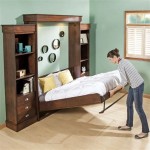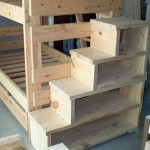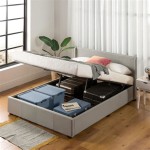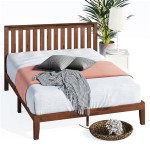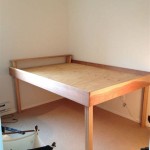Essential Aspects of Queen Size Floating Bed Plans: A Comprehensive Guide
Building a queen size floating bed is an exciting project that can elevate the aesthetics and functionality of your bedroom. To ensure a successful outcome, careful attention to essential aspects is crucial. These aspects serve as guidelines throughout the planning and execution stages, ensuring a bed that is not only visually appealing but also sturdy and comfortable.
In this article, we will delve into the essential aspects of queen size floating bed plans, providing detailed insights into each aspect's significance and impact on the overall project. We will cover essential considerations such as materials, design, dimensions, construction techniques, and finishing touches, equipping you with a comprehensive understanding to navigate your floating bed building journey effectively.
Materials
The choice of materials for your floating bed determines its durability, stability, and overall appearance. Consider using high-quality hardwoods, such as oak, maple, or walnut, known for their strength and resistance to wear. Alternatively, engineered wood products, like plywood or MDF, offer a more budget-friendly option. Remember to select materials that complement your desired aesthetic and match the weight capacity requirements.
Design
The design of your floating bed establishes its unique character. Consider the overall style of your bedroom and choose a design that harmonizes with its decor. Opt for a design that features clean lines and minimalist profiles for a contemporary look. If a more traditional style is desired, incorporate ornate details and curves. Experiment with different headboard shapes and footboard designs to add visual interest.
Dimensions
Accurate dimensions are essential for a well-fitting and balanced floating bed. Determine the desired length and width of the bed based on your mattress size. The height of the bed should be carefully considered to ensure a comfortable sitting and sleeping position. Plan for an appropriate amount of clearance between the bed and the floor to create the illusion of floating. Allow for overhangs at the head and foot of the bed to provide visual interest.
Construction Techniques
Proper construction techniques are paramount for the stability and longevity of your floating bed. Utilize strong and durable joinery methods, such as mortise and tenon or dovetail joints, to ensure a solid frame. Reinforce corners and support areas with metal brackets or additional wood blocks for added strength. Ensure that the bed frame is level and square before attaching it to the wall. Use a secure anchoring system to prevent wobbling or shifting.
Finishing Touches
Finishing touches add the final touches of elegance and protection to your floating bed. Sand the wood thoroughly to remove any imperfections. Apply a primer to ensure adhesion, followed by several coats of high-quality paint or stain in your desired color. Consider adding decorative elements, such as molding, trim, or hardware, to enhance the bed's aesthetic appeal. Paint or stain the wall behind the bed to create a visual backdrop and draw attention to the floating effect.

Floating Queen Size Platform Bed Plans Howtospecialist How To Build Step By Diy Frame

How To Build A Diy Floating Bed For Queen Size Mattress Thediyplan

Diy Queen Size Floating Bed Howtospecialist How To Build Step By Plans Frame

Queen Size Floating Bed Plans

How To Build A Diy Floating Bed For Queen Size Mattress Thediyplan

Diy Queen Size Floating Bed Howtospecialist How To Build Step By Plans

Queen Size Diy Floating Bed Frame

Floating Queen Size Platform Bed Plans Howtospecialist How To Build Step By Diy

Queen Diy Platform Bed With Floating Night Stands Frame

Floating Bed Frame Plans Myoutdoorplans
Related Posts
